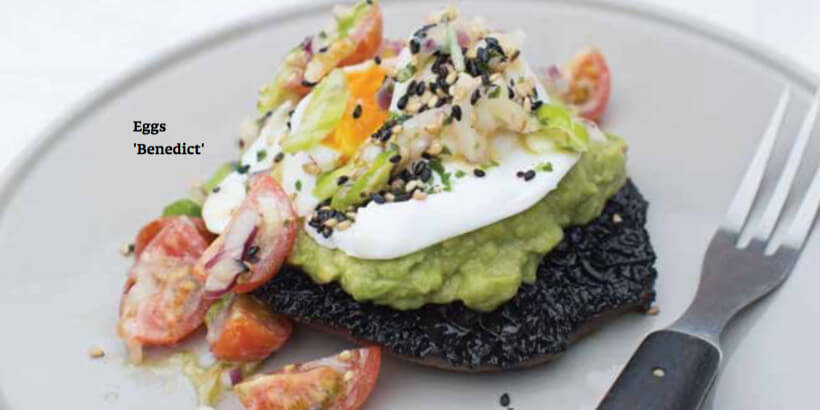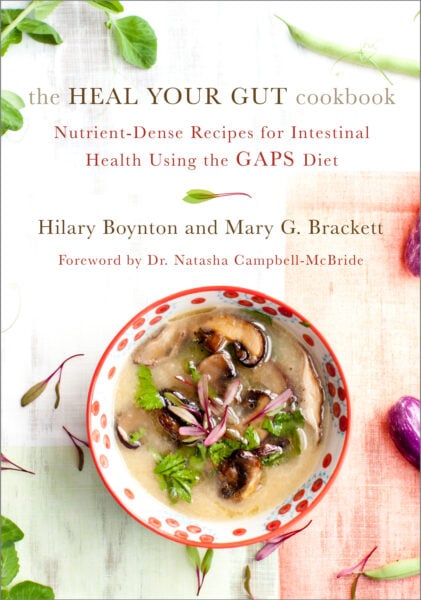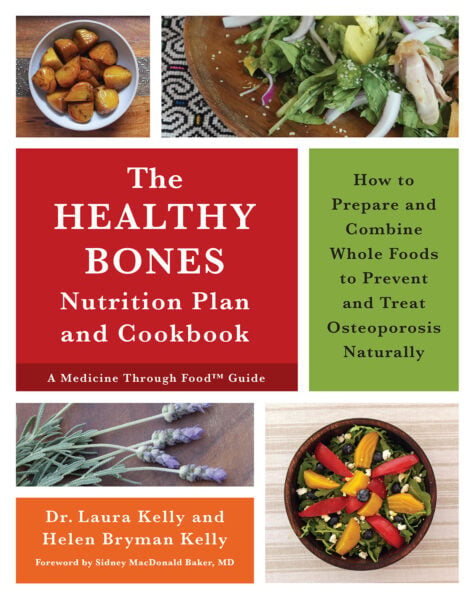Breakfast: Keto-Style and Kid-Approved
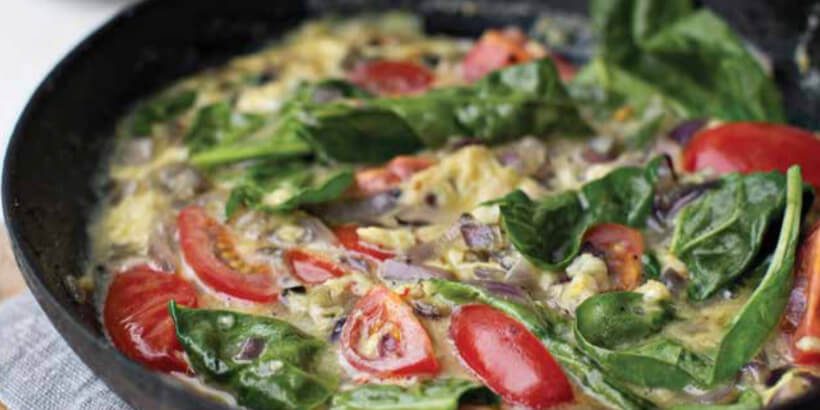
If you’ve been following a ketogenic diet for a while now you probably have a few hacks of your own when it comes to cooking up delicious low-carb breakfast options. If you’re new to the program, you’re probably wondering how many different ways you can cook an egg because that’s the only thing allowed. (You’re wrong about that one!) No matter which camp you fall into, there’s always room for a little extra inspiration.
The following excerpt is from The Ketogenic Kitchen by Patricia Daly and Domini Kemp. It has been adapted for the web.
It’s no secret that I buy a lot of cookbooks, and I do mean a lot. The recent shift towards healthier books with lots of things reduced – namely, sugar and processed carbohydrates – means that authors have to get mighty creative with their breakfast offerings. While I love looking at these dishes, there is no way in hell that I am going to make buckwheat, apricot and banana pancakes with a vegan cream. I just don’t have the time or energy.
My breakfast is usually full-fat live yoghurt (or vegan coconut yoghurt) with some berries, maybe a spoonful of applesauce, some bee pollen plus my ‘sprinkles’, which are usually chia seeds, hemp seeds and goji berries. Before this, I knock back a shot of wheatgrass and lemon juice (yuck!). I advise anyone embarking on this ritual to hold their nose and think of all the good it’s doing you rather than focus on the taste of silage infiltrating your taste buds.
I also have a cup of tea with some almond milk. Yes, regular old Barry’s tea. I’m not a huge coffee drinker, but when I do have it, I like a flat white from a coffee shop. I would never bother making it at home. You see, I can’t do everything, so I have to pick and choose what stuff I can do.
I don’t allow my kids to have any processed carbs in the morning, as they both eat bread or some form of carbs for lunch. But I can control what they eat in the morning and for dinner. Battling with them about what they eat during the day is tough, but encouraging better choices for lunchtime and during the day – eating brown bread instead of white sliced pan, choosing breads like pitta, which are less carby, and avoiding processed meats as fillings – are things I can get them to follow through with. Staying away from fizzy drinks or straight fruit juices are also things they can do.
This all becomes trickier when they get older and have some buying power. I have seen kids whose parents are too strict about their food (in the best way) totally rebel and go crazy when presented with a smorgasbord of sweets and treats at a kids’ birthday party. I have friends whose parents used to make them go to parties with their own packed lunch and strict instructions to the mum in charge forbidding their child to eat any cake. As my pal recalls, this led to an unhealthy gorging on junk as soon as their parents’ backs were turned; such is the desire to fit in and taste the forbidden. I have another friend whose mum used to feed her to the brim before she went to parties so that she would be too stuffed to indulge, but she said she turned to terrible eating habits as a teenager instead. What to do?
Kids, like adults, love junk food. We try not to buy rubbish at home, and when there is a party, well, I think you have to turn a bit of a blind eye. Prohibition failed miserably back in the 1920s. In my opinion, taking the same approach to all occasions can backfire, but I do appreciate that not everyone will agree. At most parties these days, you see parents making an effort to at least have a few bits of fruit available. The fruit skewers may not get touched, but at least it’s there. Rarely do you see kids getting colas or other fizzy drinks; everyone accepts this is a no-no, especially from a sanity point of view.
Once they get older, the list of banned foods gets shorter as they reach that phase of inevitable teenage rebellion. My only real dietary request for my teenager is that she stays away from sodas and endless amounts of choc-bars or crisps, but especially the fizzy drinks. I hint that some fruit during the day is a good thing, but so is a small handful of nuts or the odd bit of dried fruit.
Again, I believe that if you strangle their choices too much, they secretly rebel and make poor choices just to give you the two fingers. You’ve got to achieve the right balance and educate them so that they can make smart choices when they have purchasing power. Until then, you have more say in what they eat than they do. But don’t be a complete pain.
Like most parents I know, we water down fruit juice heavily and try to encourage drinking water when thirsty as opposed to quenching thirst with juice, which is loaded with sugar. Dinner is always about getting as much veg into them as I can, plus some good fats and a little protein too. I don’t buy biscuits or crisps, because if they were in the house, we (and probably mainly me!) would eat them. We don’t have ready meals but do allow the odd take-away pizza or sushi. The thing is that when you wean yourself off processed food and eat better more often, the lure of salty, greasy, industrialised food wanes. You start craving the good stuff. And surely that has to be a good thing, right?
So, back to breakfast. You’ll find that this section is simple and no-nonsense. I make an effort with dinner; not so much with brekkie. Some days I like to fast during the day, drinking plenty of filtered water with raw cider vinegar, or maybe a light soup or a green juice. Then there are some days when I could eat the entire fridge. Fasting is easier when you are truly on the run all day. I find it impossible to do when on my computer, especially when writing about food. I find myself making endless trips down to the fridge trying to satisfy my insatiable hunger that comes from dreaming up new recipes.
Eggs ‘Benedict’
Serves 4
4 Portobello mushrooms (336g)
2 tbsp sherry vinegar (23g)
Salt and pepper (3g)
2 ripe avocados, mashed (360g) 1 tbsp tamari (18g)
1 tsp sesame oil (4g)
Few shakes of hot sauce (no sugar) (5g) Splash of white wine vinegar (2g)
4 eggs (228g)
Furikake seasoning
Preheat the oven to 180°C (365°F).
Peel the mushrooms but leave them whole. Put them in a roasting tray, sprinkle with the sherry vinegar and season. Roast for 15–20 minutes, until they are soft and juicy.
Mix the mashed avocados with the tamari, sesame oil and hot sauce and set aside.
Now poach your eggs. If I was doing this in a large batch, then I would just plop them in without worrying too much about swirling the water and so on, so just get on with it. Get a frying pan and fill it with water. Bring it up to the boil and add the white wine vinegar, then reduce the heat so that it’s barely bubbling. Crack the eggs into the water, keeping the water simmering very gently. After 11⁄2–2 minutes, lift the eggs out of the saucepan with a slotted spoon and pat them dry with some kitchen paper.
Top the warm mushrooms with the avocado cream, then the poached eggs and some furikake seasoning, which is available in health food stores, good delis and Asian markets. It’s a mix of toasted sesame seeds and seaweed and is quite delicious, especially sprinkled on avocados.
Banana and coconut pancakes
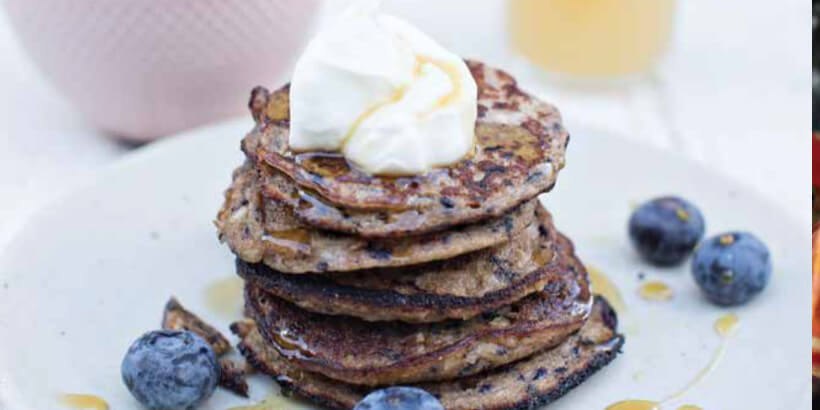
Makes 8 small but thick pancakes, which would serve 4–6
2 ripe bananas (320g with skins)
3 eggs (171g)
40g (1.4 oz) rice flour (40g)
25g (0.9 oz) desiccated coconut (25g)
1⁄2 tsp ground cinnamon (1g)
1 punnet (5.3 oz) blueberries (150g)
1–2 tbsp olive oil or butter, to fry (19g)
Mix the bananas and eggs in a blender until smooth. Whisk in the rice flour, coconut and cinnamon, then fold in about half of the blueberries. Let it sit for about 10 minutes and get a frying pan ready. Heat up some olive oil or butter and ladle or pour in blobs of batter from a jug. Let them set on one side, then turn them over. Cook on both sides and then pile up all of the cooked pancakes on a platter. Scatter with the remaining blueberries and serve.
Recommended Reads
Recent Articles
Garlic mustard: while known as “invasive,” this plant can be consumed in its entirety and has great nutritional value. Plus, the garlic-flavor is a perfect addition to any recipe that calls for mustard! The following are excerpts from Beyond the War on Invasive Species by Tao Orion and The Wild Wisdom of Weeds by Katrina…
Read MoreOh, honeysuckle…how we love thee. If only there was a way to capture the sweet essence of this plant so we could enjoy it more than just in passing. Luckily, foraging and some preparation can help make that happen! Here’s a springtime recipe that tastes exactly like honeysuckle smells. The following excerpt is from Forage,…
Read MoreIntroducing…your new favorite brunch dish! This whole broccoli frittata is packed with fresh, wildcrafted flavors that are bound to help you start your day off on the right foot. The following is an excerpt from The Forager Chef’s Book of Flora by Alan Bergo. It has been adapted for the web. RECIPE: Whole Broccoli Frittata…
Read MoreMany know the effects of catnip on our feline friends, but few realize that catnip has medicinal effects for humans. From stomach aches to reducing fevers, catnip is a versatile herb with many benefits. The next time you grow this plant for your cat you may end up taking a few cuttings for yourself! The…
Read MoreWondering where to forage for greens this spring? Look no further than hedges, which serve as natural havens for wild greens and herbs! The following is an excerpt from Hedgelands by Christopher Hart. It has been adapted for the web. Food from Hedges: Salads and Greens Let’s start by looking at all the wild foods…
Read More

